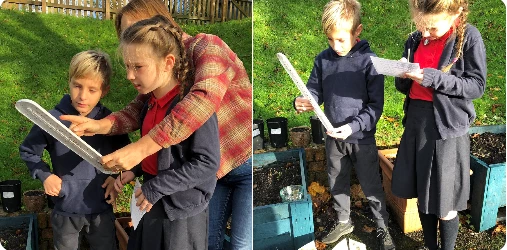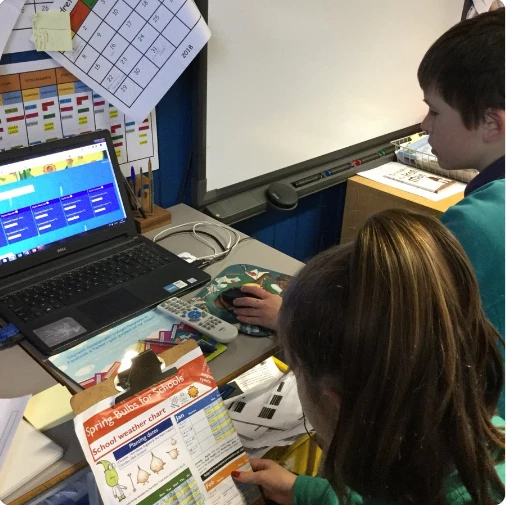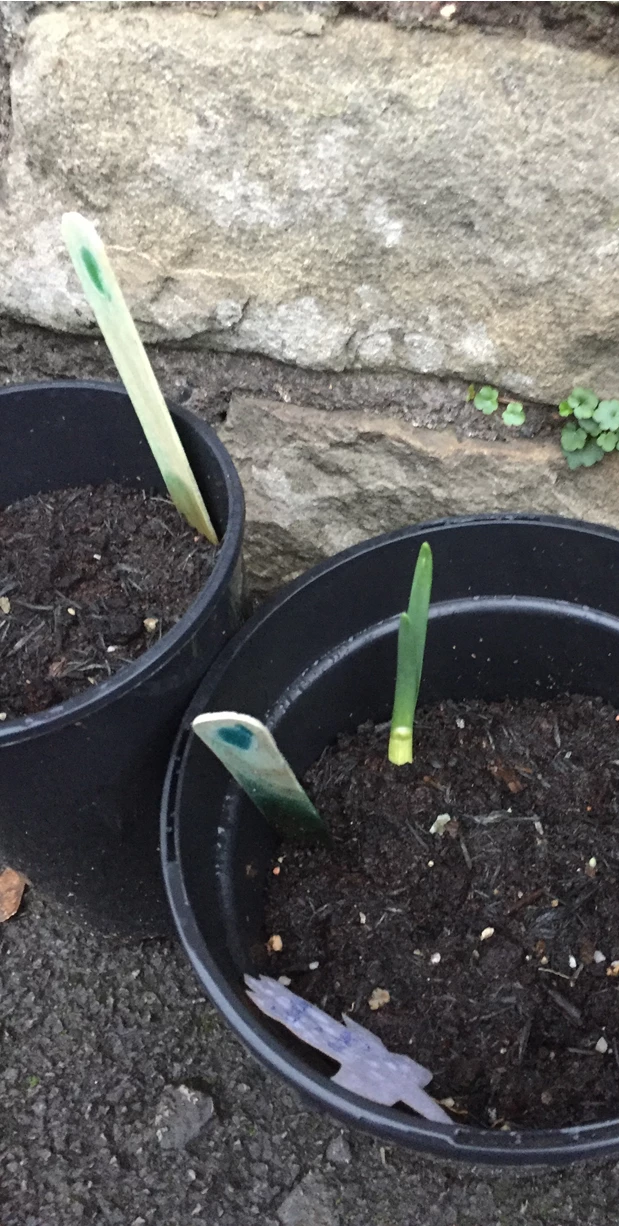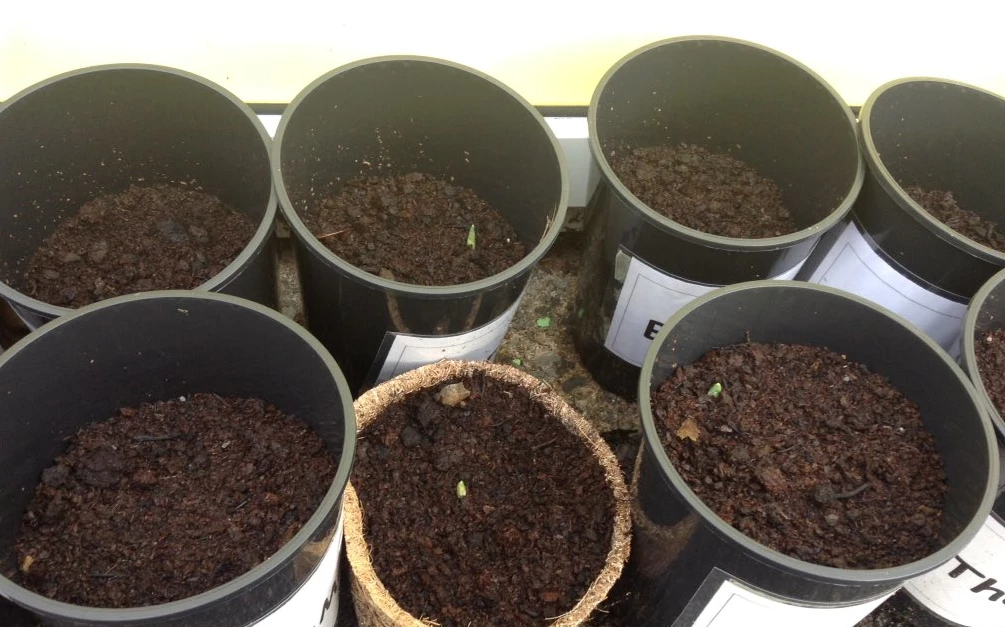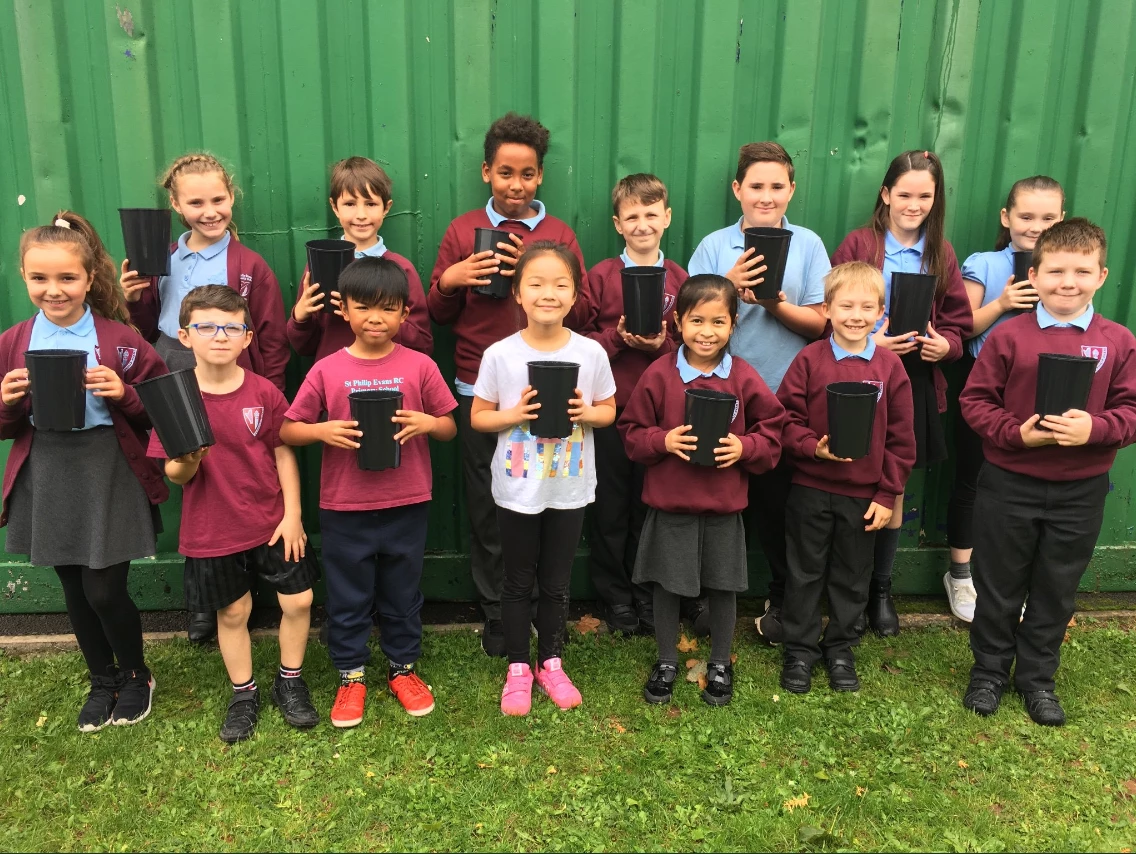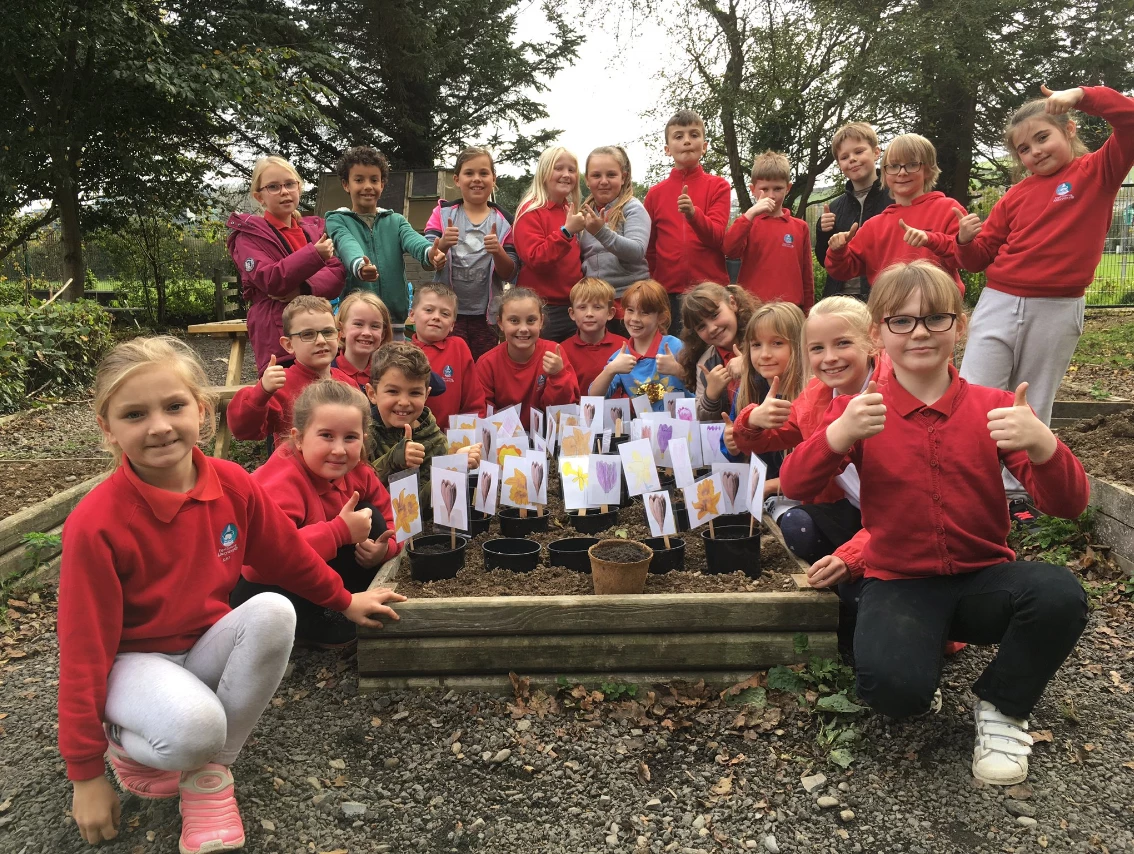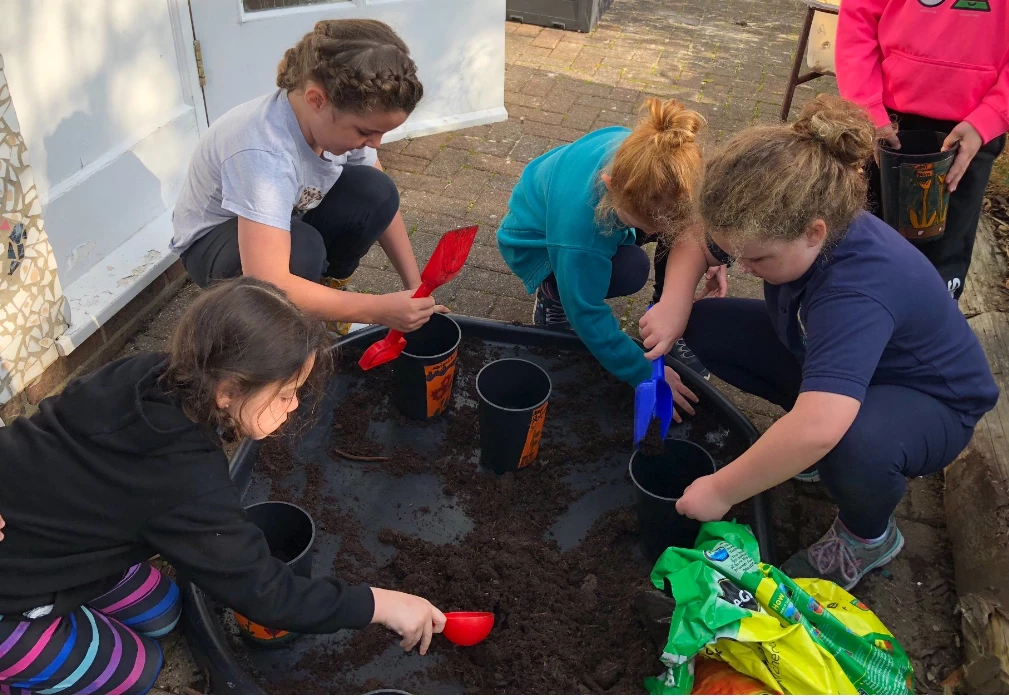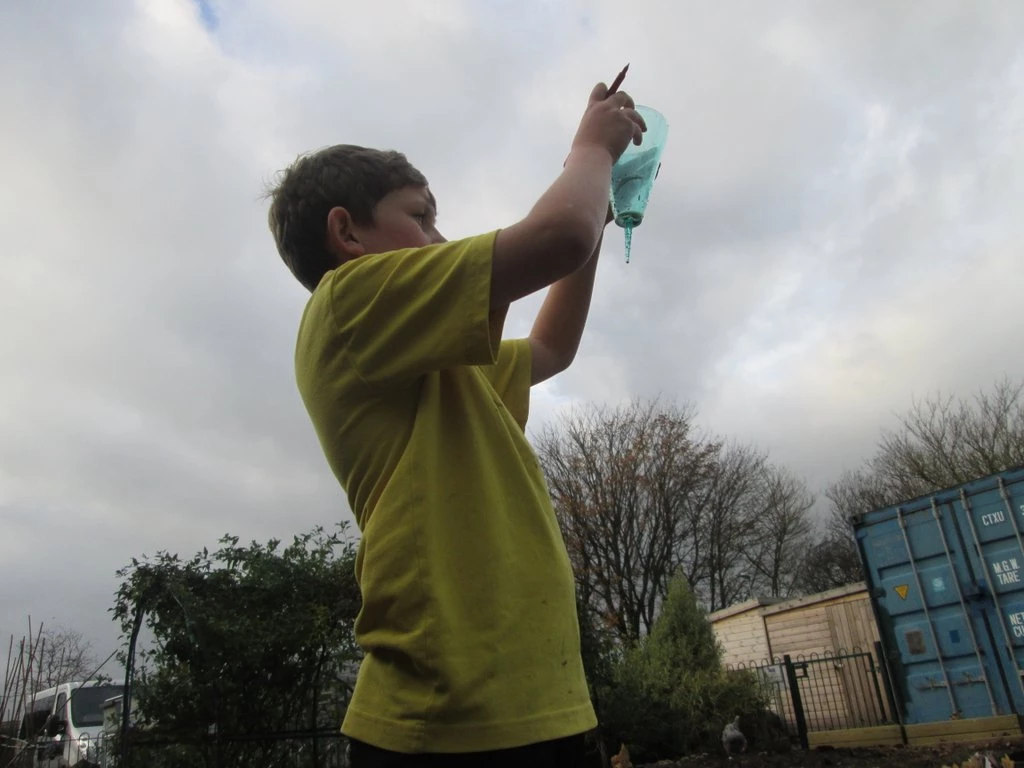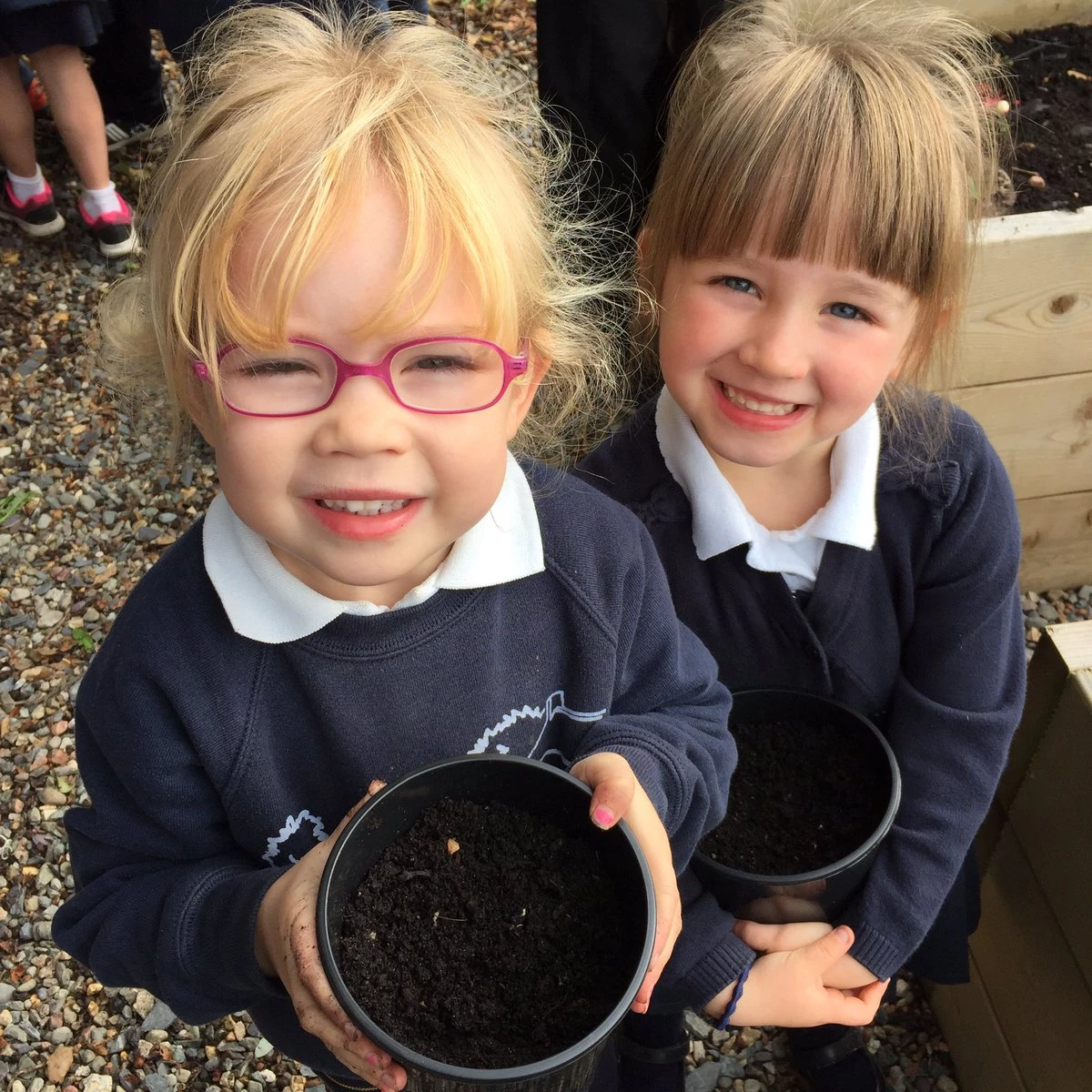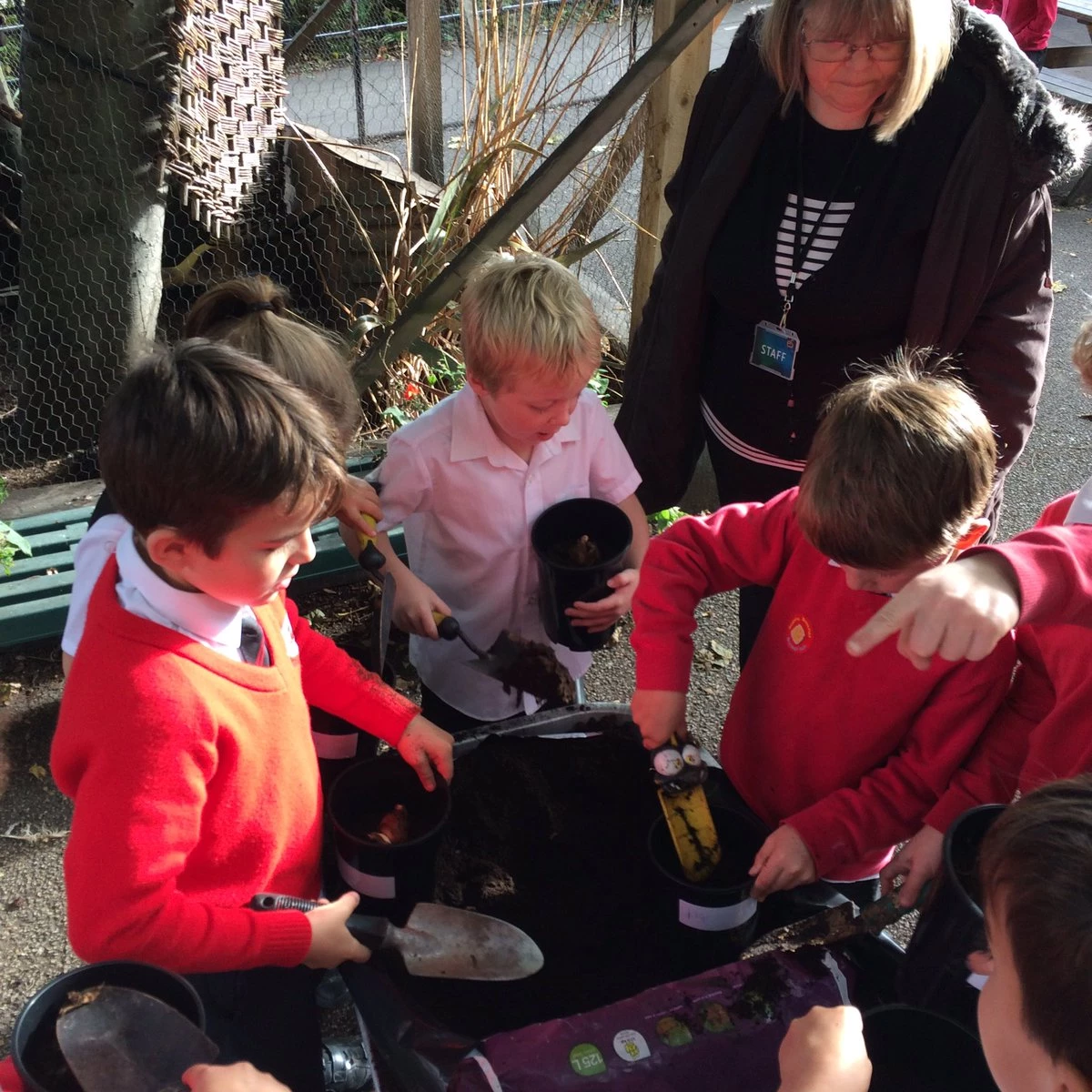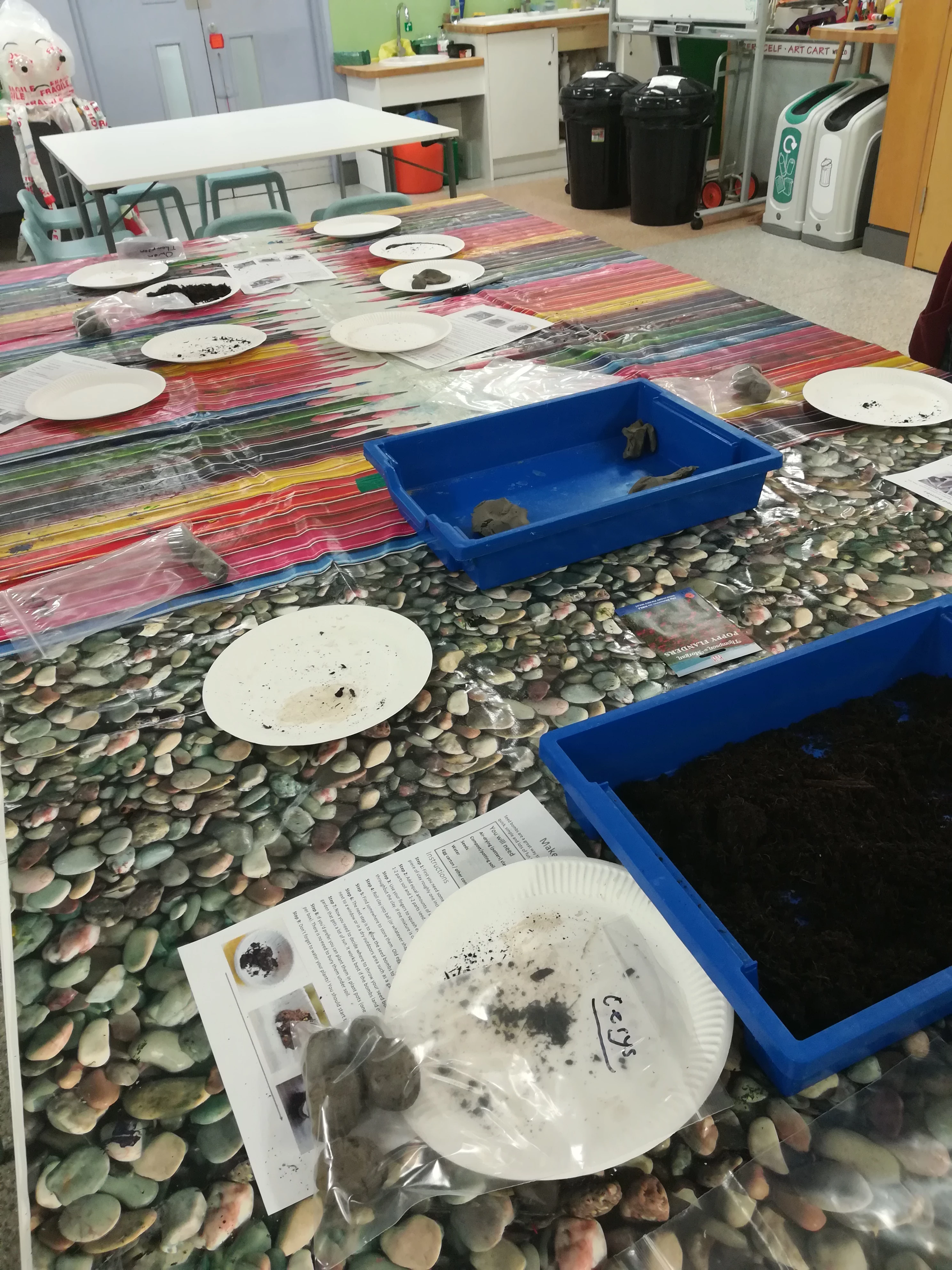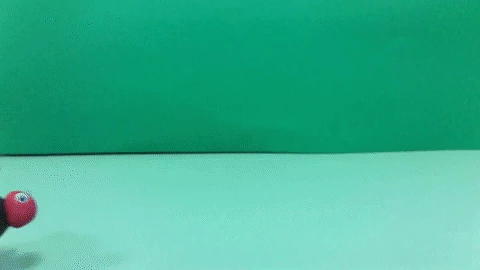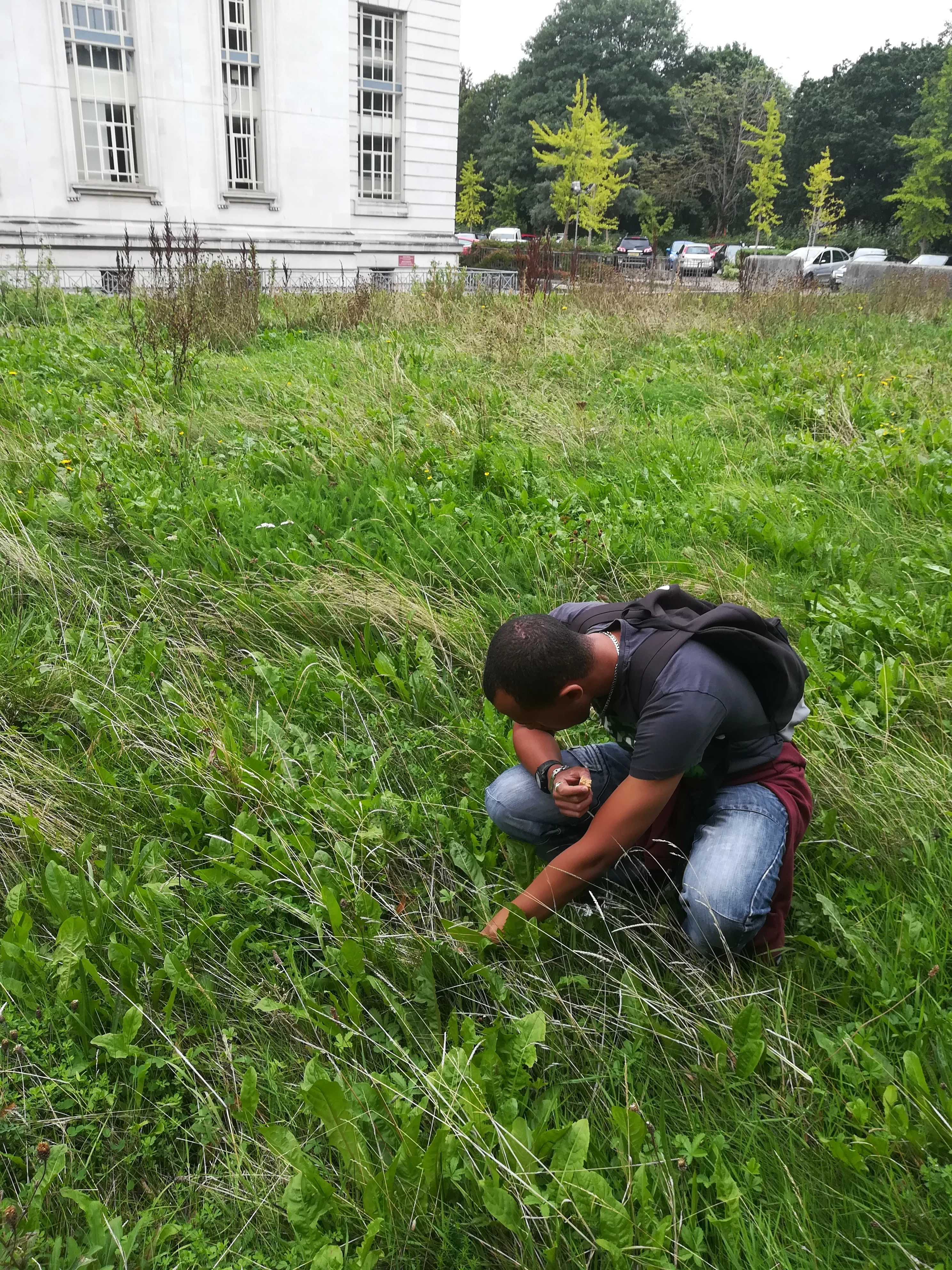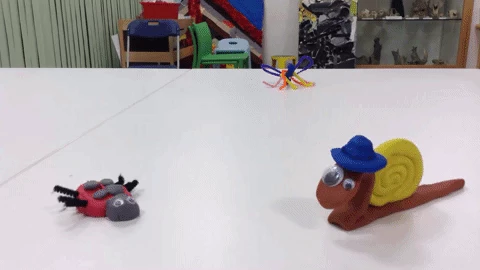Weather Observations from our Investigation (Dec-18)
, 7 December 2018
Hi Bulb Buddies,
I have enjoyed reading your comments and studying your data. I’ve also enjoyed the photos that have been shared on Twitter showing some of you taking your weather readings. It looks as though you have been outside in all weathers in the pursuit of scientific study! Fantastic!
A number of you have reported that your plants have started to sprout! I’ve shared a couple of pictures here. Please share your photos with me as well, and let me know how your bulbs are doing when you enter your weather data.
Keep up the good work Bulb Buddies,
Professor Plant
Comments from weather entries:
Comments about your bulbs
Bursar Primary Academy: Thank you for giving us the chance to grow our plants- they haven't started growing yet. (O.E. Year 4) One of our indoor bulbs in the coconut pot has started to sprout. (K.W. Year 4). Professor Plant: Thank you for taking part in the project and looking after your plants so well! Keep me updated!
Ysgol San Sior: It was a great first week and H.’s crocus has already started to grow. H. had very much enjoyed looking after the plats and is excited to see the first growth. Professor Plant: Fantastic news, please keep me updated and share photos if you can.
Plasnewydd Primary: Some of the bulbs have started to grow. Professor Plant: Fantastic news bulb buddies. It is still early, but a number of other schools have also seen some early growth. Do you think it’s linked to the mild weather we’ve been having?
Garstang St. Thomas' CE Primary School: professor plant how long do you think until our flowers will bloom because of it being so rainy and cold. See you soon<3 Professor Plant: It’s hard to say when our plants will flower. Usually this happens around February – March. Some schools have seen some early growth, but the weather will have an impact on our plants over the coming months. Why not compare your weather readings so far this year to last year, and think about whether you’d expect your plants to flower earlier or later than last year?
Arkholme Primary School: We held our Memeorial service near to where we planted the bulbs - no sign of any growth. Professor Plant: I hope the Memorial sevice went well bulb buddies. Thank you for the update on your bulbs.
Steelstown Primary School: This week has been fun it is good to understand how our bulbs are growing as the weeks get colder. Professor Plant: I’m glad you are enjoying the project! Have you seen the ‘life of a bulb’ origami booklet under the Teaching Resources section of the website?
Good Shepherd Primary and Nursery School: A: I liked watering the plants and checking the rainfall. A: I liked watering the plants and checking the temperature. Professor Plant: Fantastic bulb buddies, you make the perfect team! Keep up the good work!
Tonyrefail Community School: No sign of plants yet. The weather has been much colder this week and it's been drizzly but no water has collected in our rain gauge. Professor Plant: Thank you for the update bulb buddies, keep up the good work!
Bursar Primary Academy: We have moved our rain collector as we're not sure it's accurately collecting any rainfall! A few of our bulbs are sprouting! Professor Plant: Fantastic, thank you for thinking about whether the rain gage was in the best position to collect rain fall. I’d love to see some images of your plants if you are able to share these?
Ysgol San Sior: We are excited to have our second crocus growing. Professor Plant: Fantastic news, please share photos!
Bursar Primary Academy: Sorry our data has not been good for this week- the weather has been against us! (A. Year 4) We are going to measure our plants next week. (D. Year 4). Professor Plant: Thank you for updating me bulb buddies, keep up the good work!
Ysgol Bro Pedr: a damp start but a beautiful end to the week. We planted a few extra bulbs inside the classroom as an experiment this year to try and force them - leaving half the bulb above ground - they re just starting to grow ! Professor Plant: Ah that will be an interesting experiment! Let me know what your findings are. Remember that it’s only the flowering dates for the outdoor plants that will need entering to the project website.
Comments about the project
Steelstown Primary School: We are really enjoying it so far and we are looking forward to collecting the data next week. Professor Plant: Fantastic bulb buddies, I’m glad you are enjoying the project!
Ysgol Gymraeg Dewi Sant: Diolch am anfon y bylbiau aton ni. Ni'n edrych ymlaen i weld y blodau. Athro’r Ardd: Diolch am gymryd rhan yn y prosiect Cyfeillion, rwy’n edrych ymlaen at weld y planhigion blodeuo hefyd. Wrth edrych ar y data blaenorol, pryd rydych yn meddwl bydd y planhigion yn blodeuo?
YGG Tonyrefail: Roedd yn hwyl cofnodi y data. Athro’r Ardd: Rwy’n falch i glywed rydych yn mwynhau'r prosiect Cyfeillion!
Stanford in the Vale Primary School: happy to restart the project and i am teaching the younger children in the club how to record. Have a good weekend and we will be back next week. Regards R.. Professor Plant: Welcome back R.! I’m glad to know the project is in good hands again this year. Keep up the fantastic work!
Hudson Road Primary School: Thank you, we have enjoyed learning to read the temperature and the rain gauge measures. It has only rained once this week but it has been a bit chilly. Professor Plant: Fantastic, I’m glad you are learning new skills and hope you are enjoying the project my friends!
Auchencairn Primary School: We had to move the rain gauge on Wednesday after someone knocked it over so we aren't sure if the results are correct. Hopefully it is alright in its new position. Stormy at the weekend and a plant pot was blown over. Professor Plant: Thank you for the update bulb buddies, I hope the pots and rain gauge are safe now. Keep up the good work!
Our Lady of Peace Primary School: We were glad we won the photograph competition and it was fun. Professor Plant: I’m glad you enjoyed it bulb buddies and I hope you liked your prize!
Our Lady of Peace Primary School: It was fun and cold. Professor Plant: I’m glad to hear you are enjoying the project even in the cold bulb buddies!
Whitgreave Junior School: I realised that I had misread the scale last week, so the rainfall data was completely out! It won't let me go back and edit submitted data, not sure if there is a way of doing that, please let me know if there is, so it can be more accurate! Thank you. Professor Plant: Thank you for updating me bulb buddy. You should be able to re-enter data for previous weeks, and the most recent entry will show on the graph as the correct entry. If this isn’t working for you please send me an email and I will make the corrections.
Shirenewton Primary School: We had to recheck the temperature because I took the Fahrenheit reading, not degrees Celsius. Professor Plant: I’m glad you are learning about different temperature scales bulb buddies. Keep up the good work.
Woodlands Academy: This week we put a new net over our plants to ensure the wildlife would not dig up our bulbs again. The children also loved the opportunity to go outside and check the readings. Professor Plant: There’s good thinking bulb buddies! It sounds like your bulbs have had an exciting time of it. Thank you for looking after them, and I’m glad you are enjoying the project.
Y3AE St Julian's Primary Newport: Unfortunately when we arrived at school on Monday morning we discovered that many of our planted pots had been thrown around and outside the school site. We still have lots left but we are keeping our fingers crossed that these will not be touched this weekend! Professor Plant: I’m sorry to hear this bulb buddies. How are your pots and bulbs now?
Steelstown Primary School: We are all enjoying collecting the data for this project. It gets more fun each week we take part. Professor Plant: I’m glad to hear it bulb buddies, I enjoy studying the data you collect each week!
Comments about the weather:
YGG Tonyrefail: Wythnos wlyb iawn!!
Ysgol Beulah: Roedd hi'n oer Dydd Mawrth:)
St. Nicholas Primary School: Wednesday was a very hot day for November. Professor Plant: Wow 19 degrees is warm for November!
Carnbroe Primary School: Hello Professer Plant this week it was a wee bit cold and very wet.
Ysgol Beulah: Oedd yn oerach yr wythnos hon.Cawson llawer o law nos Fercher.
Henllys CIW Primary: actual rainfall Tusday was 0.5 mm and Friday 32 mm
Darran Park Primary: we had a lot of rain
Darran Park Primary: the weather was warmer but we had a lot more rain.
Arkholme Primary School: we found that there was a lot of rain and that it felt colder than it was.
Kirkby La Thorpe Cof E Primary Academy: wettest week but very mild for December , double figures!!! only 1 frosty morning. soil becoming waterlogged but luckily in a breezy rural location so surface will dry.
St Julian's Primary School: A very wet week!
Our Lady of Peace Primary SchooL: It’s so close to Christmas we are so excited it was very cold this week.
Chorley St James Primary School: This week was very wet and rainy. Also, during the day time the wind started to pick up and on Friday we had hale. It was very bad.
Chorley St James Primary School: This week it has been a little bit hotter that last week, but we still had rain and wind.
Chorley St James Primary School: This week it has been dry and hasn't really had any rain except on Wednesday. Hopefully the next week will be more hot.
St. Robert's Catholic Primary: There was no rain at all this week!
St. Robert's Catholic Primary: It was mostly dry this week and not too cold.
St. Robert's Catholic Primary: A lot of rain this week. The measure was completely full on Monday.
